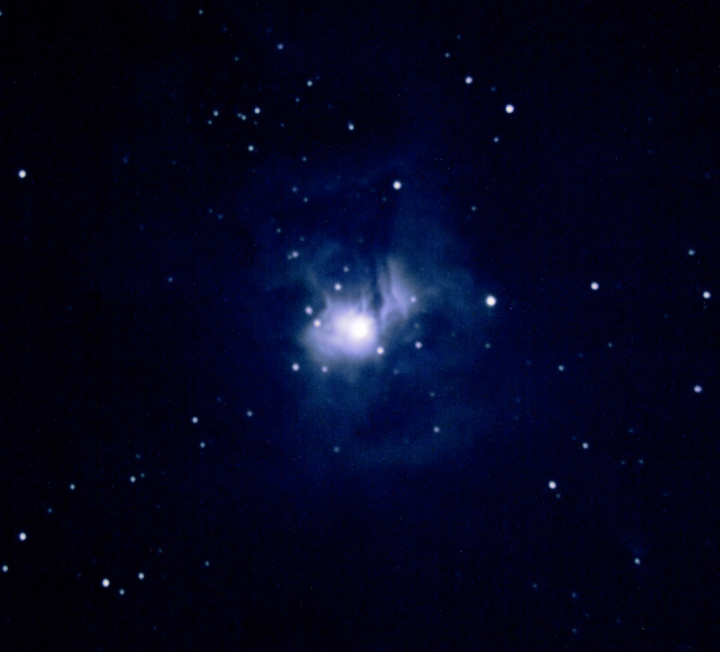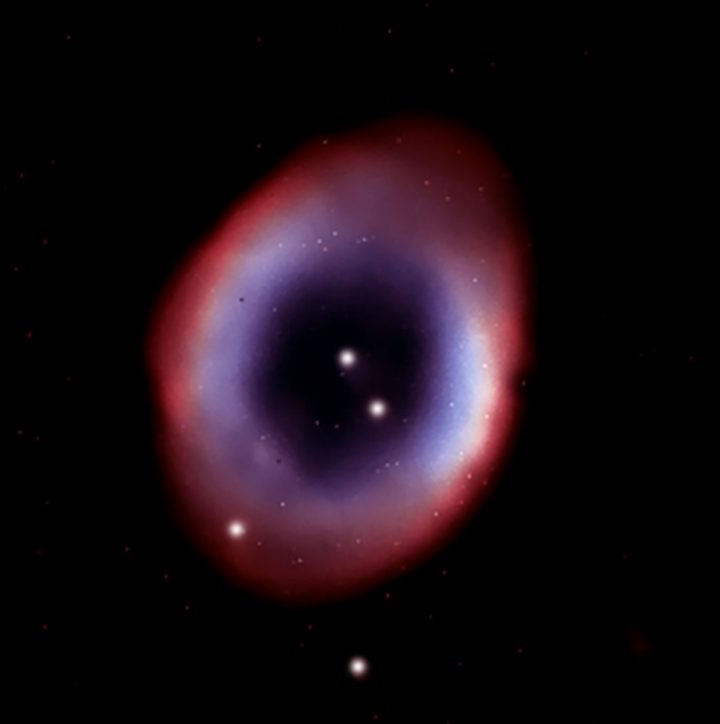Reprinted from the Island Free Press
June turned out to be a very poor month for astrophotography. High winds and low visibility made things very challenging. My primary targets for the month were Jupiter and Saturn, but you can’t always get what you want.
Supporter Spotlight

M57, or the Ring Nebula, was discovered in 1779 by Antoine Darquier de Pellepoix. Charles Messier documented it a few days later.

The nebula’s ring is believed to be the outer layers of a dying red giant star. The tiny white dwarf star in the center of the ring is what remains of the core of the star. The M57 has a visual magnitude of +8.8, and like NGC 7023, is estimated to be 1,400 light years away.
What to Look for in July
Jupiter starts the month fairly high in the sky toward the south-southwest.
Saturn will start the month in the southeast.
Venus will be visible near the eastern horizon in the early morning hours. Throughout the month, it will rise just after 3 a.m. Venus is very bright, with a visual magnitude of -4, and a gem to see with the unaided eye. Venus’ atmosphere is basically a cloud of carbon dioxide. The cloud reflects the sunlight and obscures all of the planet’s features, so it looks like a white sphere through a telescope. The carbon dioxide atmosphere also causes a greenhouse effect on Venus, resulting in an 850-degree Fahrenheit surface temperature.
Mercury will be visible near the western horizon just after sundown for most of the month.
Neptune will rise in the east just before midnight on July 1. With a visual magnitude of +7.9, you need a telescope to view this blue gas giant planet. Neptune is about four times the diameter of the Earth. It has 13 moons and takes about 165 years to orbit the sun.
Pluto will be in the night skies for all of July, too, but don’t expect to see it. With a visual magnitude of +14, you need a powerful telescope to get a glimpse of this dwarf planet.
The Delta Aquarids meteor shower will be at its peak on the morning of July 30. The shooting stars will appear to originate from the constellation Aquarius, which will be high in the southern sky at 1:30 a.m. on the 30th.
Moon Phases
- First quarter: June 30
- Full Moon: July 9
- Third quarter: July 16
- New moon: July 23
This story is provided courtesy of the Island Free Press, a digital newspaper covering Hatteras and Ocracoke islands. Coastal Review Online is partnering with the Free Press to provide readers with more environmental and lifestyle stories of interest along our coast. You can read other stories about Hatteras and Ocracoke here.








